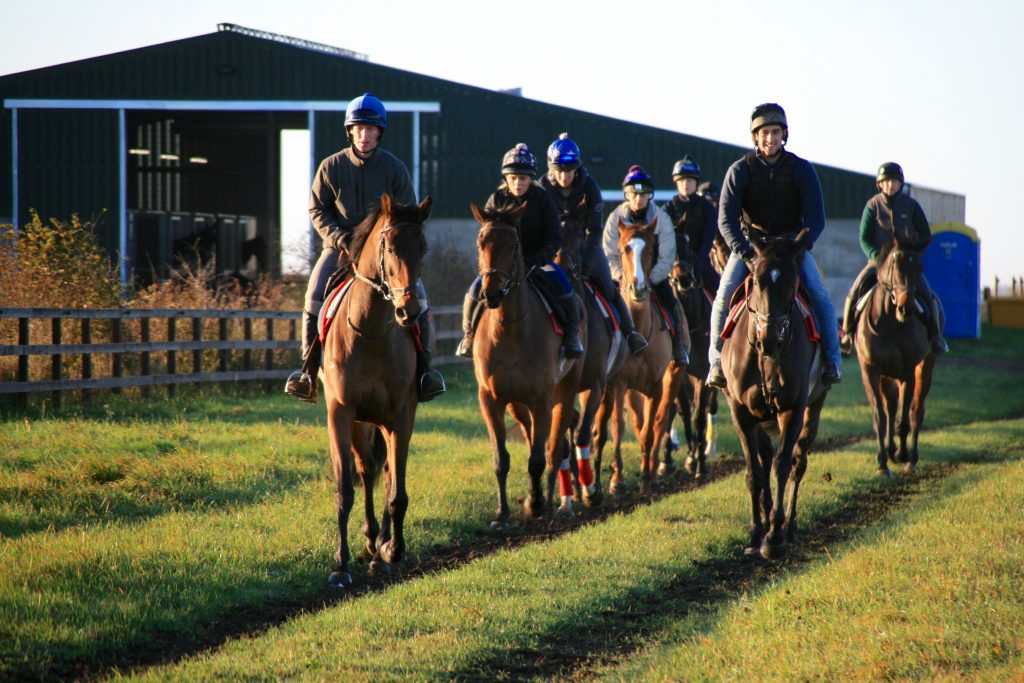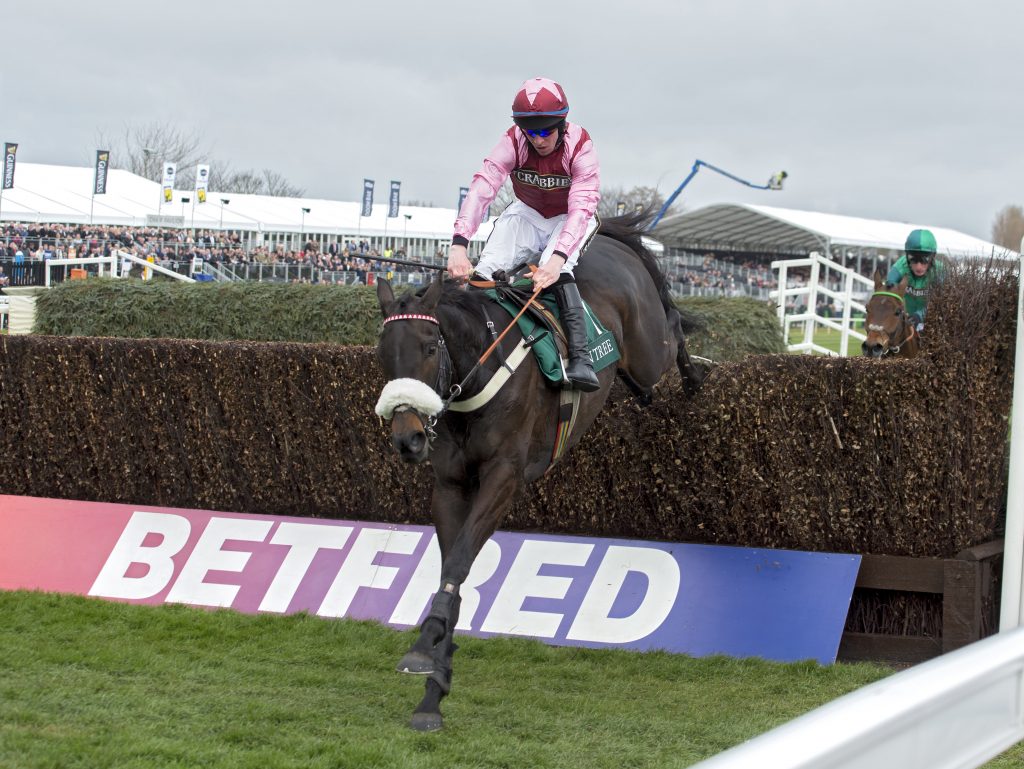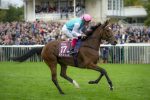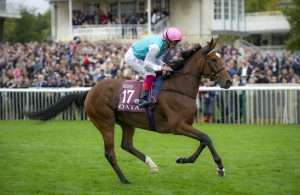In five years you have come from a five-horse yard to training 40 jumpers with an impressive strike-rate. How tough was it to start with?
Extremely tough trying to get general support with just five horses. I had never worked as an assistant trainer, just running a satellite yard for Nicky Henderson and pre-training for various people; that meant I wasn’t going to the races and getting exposure to prospective owners.
I wrote letters to various people, but didn’t get a single horse out of it. I had go to the sales, buy cheap horses and start a small racing club made up of family and friends.
I lost about two stone – down to 8st 7lb – doing the job on my own, mucking out five, riding them out, feeding and doing the entries. It was stressful, but I never stopped believing.
I paid £2,800 for Dubai Kiss, syndicated half of him and owned the rest myself. I quickly realised he was my get-out-of-jail card and when I took him to Newbury for his bumper I was very much in debt and desperate for him to do the business.
I was aware that if he didn’t win I would probably have had to hand in my trainer’s licence. But I knew he had the quality.
I managed to rustle up £60 to put on him at 100-1 and after he won sold my half into a new syndicate.
As a result of that I got three horses and people started to come in and ride out. It wasn’t until my third season, with 14 horses, that I took on two full-time staff members.
I went to Australia as an 18-year-old and learnt how to graft in the outback where we worked from dawn until dusk
Apart from having winners, how does a young trainer secure a foothold on the bottom rung of the ladder and attract owners?
The whole thing is about getting noticed and, for me personally, it was thanks to Dubai Kiss. Also, from my point of view, the buying strategy of finding horses at the right value has been absolutely key in moving up the ladder.
Obviously, there are other aspects like communication, social media and PR. I was able to discover good purchases in Dubai Kiss, Arzal and Bigmartre and at the end of the day you must have the horses to get the results.
With the help of Malcolm Bastard and Richard Venn, who operates from France, we have bought well. At the end of the day we’re in a results game.
You spent four years in Australia breaking horses. Later you were assistant to the successful pre-trainer and consignor Malcolm Bastard. What did you learn from these different experiences?
I went to Australia as an 18-year-old and learnt how to graft in the outback where we worked from dawn until dusk. I did a stint on a cattle station in Northern Territory for six months, seven days a week.
I also broke in a lot of stock horses and wild horses, which could be pretty rough. Some of them are left out running wild for two years and could be herded in by vehicles and sometimes helicopters.
So being around those horses and trying to get your hands on them was great experience. You build up an empathy with them and it was a great grounding for working with young racehorses.
You have to find a way to handle them, to get tack on them and work out how to form a relationship with them.
I came home to Malcolm Bastard, whose great reputation at the yearling and breeze-up sales had made me want to go and work for him. There was no standing around with your hands in your pockets there, either. He took me to the yearling sales in America, Ireland and England.
What I learnt from him about types of horses, conformation and what you can and can’t train was beyond recognition.
He has been at the top his game as a sales consignor for many years now. He has a fantastic client base and by listening and watching him I learnt how to conduct myself around people, particularly owners.
Racing in Australia is huge – what would you like to see Britain take from the sport Down Under?
I wasn’t involved in the actual racing while I was in Australia, but I did go to the Melbourne Cup in 2001, and I don’t think I saw a single horse because we had a very jolly picnic. That’s all I can remember!
The people I worked for out there were cowboys and stockmen, who would have 7,000 head of cattle and a lot of sheep, as well as eventers, polo ponies and racehorses, which we used to break in.

The Whittington team pull out for first lot
Originally you said you had no intention of training. What changed your mind?
My huge passion has always been with young horses so returning from Australia I joined Malcolm, rather than a trainer, to work with breeze-up horses.
That’s where I had specialised and felt I was destined to be involved with very young racehorses.
My plan had been to work for Malcolm for two years and then set up my own breaking, pre-training operation.
I did that when I left Malcolm and handled a lot of horses for Tom Dascombe and then Nicky Henderson, who was next door.
We had My Tent Or Yours and Finians Rainbow and I used to take them on to the gallops with the rest of Nicky’s string.
Just being around that quality of animal and buying and selling, including Johns Spirit who I sold on to Jonjo O’Neill, made me think I ought to try and have a crack at training.
How have you improved facilities at your Hill Barn Stables, which overlook Lambourn from the highest point on the Berkshire Downs?
We started off with one American barn and just six stables. We managed to increase the stables to 20 within that one barn, put in a huge horsewalker and a round gallop, which has been an excellent addition.
We have also built a very useful quarantine facility for horses coming from other yards or abroad. We have built the new Arzal American barn on the back of Arzal’s Grade 1 Aintree win last year.
Being on the top of the Berkshire Downs is very important; the airflow and ventilation blows the cobwebs away.
You have said you needed to put yourself under pressure to get where you are today. Can you describe that pressure?
You have to be hard on yourself and the pressure helps to make you determined and dedicated. After all, training is such a great challenge and a lot of it is making the right decisions.
Of course, you are going to make wrong calls and you have to learn from those mistakes. So you need to put pressure on yourself to make sure you get more right than wrong.
Day to day, it might be giving a horse an extra bit of work or too little work, or employing a wrong member of staff. You are learning all the time and you only do that if you are hard on yourself.
My wife Alice has been an enormous help, particularly since we have doubled the size of the business. She left the marketing world to come to me and, to be honest, does just about everything.
She rides out, runs the office, handles all the marketing, communicates with the owners, keeping them up to date with a lot of excellent photography. And they love her photos of the horses.
Adam Tucker, our racing manager, is a big help, too, with entries and our buying strategies.
With a comprehensive and interesting website as well as short films of the horses at home on YouTube, how important is the web and social media to an up-and-coming trainer?
In addition to her other jobs, Alice looks after the website and all the social media. She ensures we have a big following on Facebook and Instagram.
After all, we have moved on in the world and any new trainer has got to be involved with all that the modern-day aspects of communication and social media provide.
As a young trainer, you wouldn’t be able to survive without it.
Arzal’s death was devastating for all of us in the yard because horses like that don’t come along very often. He was the apple of our eye at the time and it was very sad
You have earned a reputation for purchasing winners and quality without paying over the odds. How do you source talent – you have enjoyed particular success with recruits from France, such as Arzal and Bigmartre – what do you look for, and are you always keen to ride them before buying?
I have the help of Richard Venn in France who finds horses and emails their details to me. Then Adam Tucker and I will look through their races and form and workout whether they might be suitable.
If so, I’ll take the overnight ferry with my vet, Andrew McGonnell and I’ll ride the horse because I want to get the feel of the individual.
When I rode Arzal before buying him I was looking for that ‘engine’ and certain quality that told me he was the right type.
Also Adam and I go to all the store sales, and bearing in mind what I learnt from Malcolm, we pick some nice prospects.
Recently I’ve been buying Irish pointers with JD Moore, Arthur Moore’s son, and he has found us a couple of crackers in Court Liability and Glenmona.
Mention of Arzal must be bittersweet – he gave your stable a Grade 1 triumph, but tragically later died. How did you get over this significant setback?
It was devastating for all of us in the yard because horses like that don’t come along very often. He was the apple of our eye at the time and it was very sad.
But we count ourselves extremely fortunate to have had him. Sometimes this game is incredibly tough but it is important to move on, look forward and hope you find another of Arzal’s quality.
He was just starting to grow up; a free going sort and really beginning to relax and enjoy his racing.

Arzal: Grade 1 winner whose death hit the Whittington stable hard
The aforementioned Dubai Kiss showed your prowess with bumper horses and earned you some publicity. Do you particularly enjoy the challenge of training for these races?
He provided me with that bit of luck early in my career and kept the show on the road. It is not necessarily just training for bumper races that I enjoy.
I love bringing on young horses and have a pre-training system in place even though I am a training yard. Be they bumper horses or prospective chasers, I am happy to give them time to progress.
It’s trying to understand what each young horse needs and to empathise with them, bringing them through a system whereby we run them when they are ready.
If they’re good enough to win their bumpers, they normally just do, anyway.
I bought Zephyros Bleu as a store horse, he’s won his chase and at seven is still progressing and will do for another three years, hopefully becoming a Welsh or Midlands National horse.
He is still nowhere near his full potential. I enjoy trying to understand each horse’s needs.
At 37 and a member of the exciting new generation of young trainers, you must have a view on how British racing can expand its coverage to attract more millennials to the sport…
We try to expose our training operation to the younger generation on social media via Facebook and Twitter. That’s important, and I also think ITV are doing a good job covering a sport where it is difficult to find a balance between the betting public and the general public.
Ed Chamberlin and his team make racing fun, while still catering for the more serious betting audience. However, I do think all terrestrial coverage should be on the main ITV channel, instead of ITV4, to attract more viewers.
Their features and interviews with owners and stable staff also help to educate and appeal to the younger generation.
Perhaps more could be done to promote the top racehorses as heroes, like they do in Japan. Everybody loves a Kauto Star.
Can you give us a bumper horse, hurdler and chaser to follow this season?
Let’s Get At It, related to the useful Rocky Creek, is a nice bumper horse. He is big, has quality and a bit of speed. One day he should make a decent chaser.
The hurdler I am going for is Simply The Betts, who has a bit of star quality about him and won his bumper at Market Rasen.
The chaser is Emerging Force, who, after an interrupted preparation, ran a really encouraging race first time out in the Sodexo Chase at Ascot.
He goes for the Becher Chase at Aintree in December and could be a National horse this season or next.



